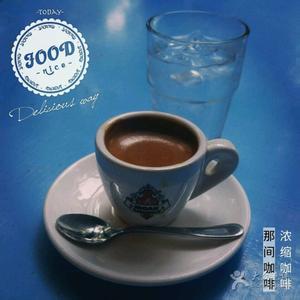Introduction of boutique coffee beans in Xidamo Chiso Coffee Flavor Manor, Ethiopia
It is produced by Xilisha Cooperative near Dilla town. The cooperative was founded in 1976 and is now a member of the SCFCU of the Sidamo Farmers' Cooperative Union. We have screened the coffee again, and the selected batch has excellent flavor, which tends to be honey, citrus and coffee flowers.
The coffee flavor of Sidamo is very diverse, with different soil types, microclimate and countless native coffee species, which make the coffee produced in cities and towns have obvious differences and characteristics. In 2010-2012, it continuously obtained the high score of CR92~94, the authoritative coffee evaluation website in the United States. Thus it can be seen that the raw beans in this area are extraordinary. The territory has towering mountains, highlands, plateaus, valleys and plains, with diverse topography. The geology of the area belongs to fertile, well-drained volcanic soil with a depth of nearly two meters and a dark brown or brown surface soil. The biggest advantage of the place is that the soil fertility is maintained through the circulation of organic matter, using the withered leaves of the surrounding trees or the residual roots of the plants as fertilizer.
Connecting the high-quality raw beans of coffee origin with the taste buds of coffee drinkers, it also makes their own roasted "Nordic style" coffee beans unique in the trend of boutique coffee in the world!
This issue introduces Sidamo Hunkute, a coffee bean from the famous Nordic advance (founded by Tim wendelboe).
This Ethiopian variety is the local native species Heirloom. As an ancient high-quality coffee variety in Ethiopia, the native species always show a unique style in various Ethiopian producing areas! Interestingly, compared with the usual Ethiopian coffee beans, this raw bean is really ordinary in appearance, but the flavor presented in the cup is so wonderful that even when it is given to people who have little coffee tasting experience, they can clearly identify the flavor! So the high price of this kind of beans makes sense!
Altitude: 1800-2000m, use other trees around to form natural shade for coffee trees.
Harvest season: may 2015
Treatment: washing 24-26 hours, African viaduct drying for 10-15 days
Flavor description: Jasmine and citrus aromas, yellow drupes, litchi, red currant, rose, complex and deep, rich flavor, bright sour and sweet, well-structured palate, juicy, soaking style will have bright characteristics, esp will have bright and balanced acidity and flavor from the Sherisa Cooperative near Dilla town. The cooperative was founded in 1976 and is now a member of the SCFCU of the Sidamo Farmers' Cooperative Union. We have screened the coffee again, and the selected batch has excellent flavor, which tends to be honey, citrus and coffee flowers.
The coffee flavor of Sidamo is very diverse, with different soil types, microclimate and countless native coffee species, which make the coffee produced in cities and towns have obvious differences and characteristics. In 2010-2012, it continuously obtained the high score of CR92~94, the authoritative coffee evaluation website in the United States. Thus it can be seen that the raw beans in this area are extraordinary. The territory has towering mountains, highlands, plateaus, valleys and plains, with diverse topography. The geology of the area belongs to fertile, well-drained volcanic soil with a depth of nearly two meters and a dark brown or brown surface soil. The biggest advantage of the place is that the soil fertility is maintained through the circulation of organic matter, using the withered leaves of the surrounding trees or the residual roots of the plants as fertilizer.

Important Notice :
前街咖啡 FrontStreet Coffee has moved to new addredd:
FrontStreet Coffee Address: 315,Donghua East Road,GuangZhou
Tel:020 38364473
- Prev

Introduction to the characteristics of Dominica coffee flavor and taste manor area
At the beginning of the 17th century, when French, Dutch and British pirates were operating in the west of Hispaniola, France began to allow farmers and merchants to gradually colonize the western part of the Spanish island, which was blocked by mountains on the island. It didn't attract the attention of the Spaniards in the east. [3] in 1677, about 4,000 French lived in 11 villages in the west of the island. In 1697, France and
- Next

Unique soft floral flavor of Yega Chuefei Adordo Coffee. Introduction to the characteristics of the manor area.
Since EGF came to power in 2000, it has established a federal regime based on regional national autonomy, focusing on economic development and focusing on the coordination of relations among stability, development and national unity. [1] on December 8, 1994, the Ethiopian Constituent Assembly adopted the fourth Constitution, the Constitution of the Federal Democratic Republic of Ethiopia, which entered into force on 22 August of the following year. The new constitution consists of 11 chapters and 106 articles
Related
- Detailed explanation of Jadeite planting Land in Panamanian Jadeite Manor introduction to the grading system of Jadeite competitive bidding, Red bid, Green bid and Rose Summer
- Story of Coffee planting in Brenka region of Costa Rica Stonehenge Manor anaerobic heavy honey treatment of flavor mouth
- What's on the barrel of Blue Mountain Coffee beans?
- Can American coffee also pull flowers? How to use hot American style to pull out a good-looking pattern?
- Can you make a cold extract with coffee beans? What is the right proportion for cold-extracted coffee formula?
- Indonesian PWN Gold Mandrine Coffee Origin Features Flavor How to Chong? Mandolin coffee is American.
- A brief introduction to the flavor characteristics of Brazilian yellow bourbon coffee beans
- What is the effect of different water quality on the flavor of cold-extracted coffee? What kind of water is best for brewing coffee?
- Why do you think of Rose Summer whenever you mention Panamanian coffee?
- Introduction to the characteristics of authentic blue mountain coffee bean producing areas? What is the CIB Coffee Authority in Jamaica?

